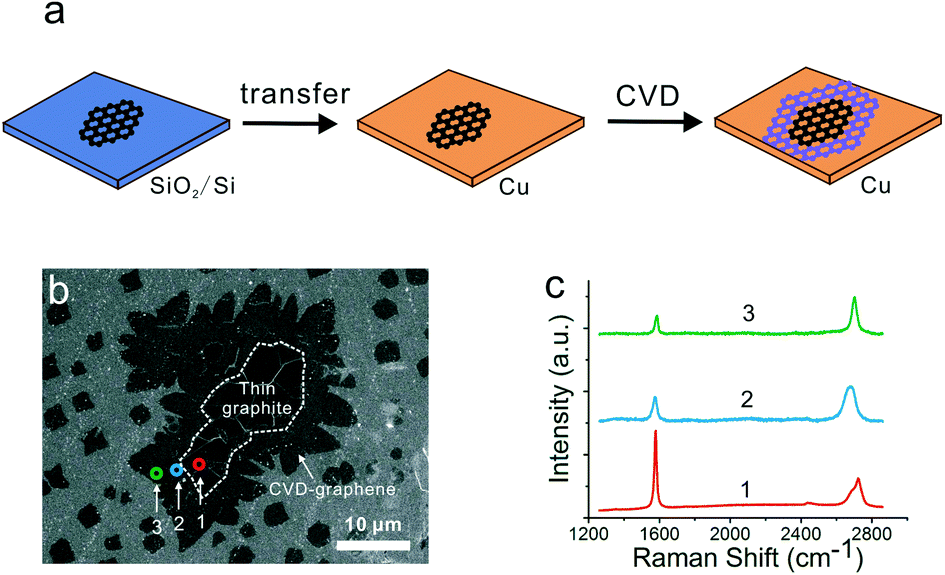Posted on behalf of Josh Campbell, web writer for CrystEngComm
Graphene is a material composed of single of 2D sheets of graphite which showcases a number of exotic properties. These include: ballistic transport of charge, which occurs partially due to the material having a lower resistivity than that of silver; an anomalous quantum Hall effect and spin transport. Single crystals of graphene can be grown using chemical vapour deposition (CVD) on a variety of substrates although the material is perhaps more famously known for being prepared from graphite using adhesive tape in a process called exfoliation. These different methods of preparation influence the final properties of the material; with CVD-produced samples often having lower mobilities than exfoliated samples, which are smaller. Epitaxy, the process of growing one crystalline material on another with recognition of some form between the layers, is another viable method of graphene synthesis, with heteroepitaxal growth having been investigated for a variety of different substrates. In this vein, it has been postulated that growing “graphene-on-graphene” could offer methods for both investigating the mechanism of graphene growth and producing large single crystal samples.

A recent article in CrystEngComm reports how homoepitaxal growth can proceed from both exfoliated and CVD grown samples of graphene. In the study, an exfoliated or CVD-grown seed was placed onto a copper foil surface and heated to 1025 °C in the presence of H2 and CH4. By investigating the atomic structure around the newly grown graphene, the authors showed that the crystal orientation was preserved from the original graphite flake and the graphene sheet, with graphene layers 1-2 sheets thick being made regardless of the method used. The authors subsequently used the result to grow large films of graphene epitaxally. A close examination of the atomic structures of both the seed and the newly grown graphene showed that the original crystal orientation was preserved during growth. It is hoped that this new method of homoepitaxal graphene growth will allow for much larger and higher-quality samples of crystalline material to be grown in the future.
Read the full article now for more details:
Lateral homoepitaxial growth of graphene
H. Wang, G. Wang, P. Bao, Z. Shao, X. Zhang, S. Yang, W. Zhu and B. Deng
CrystEngComm, 2014, DOI: 10.1039/C3CE42072H
 |
Josh Campbell is a PhD student, currently at the University of Southampton, UK studying crystal structure prediction of organic semiconductors. He received his BSc from the University of Bradford. |










